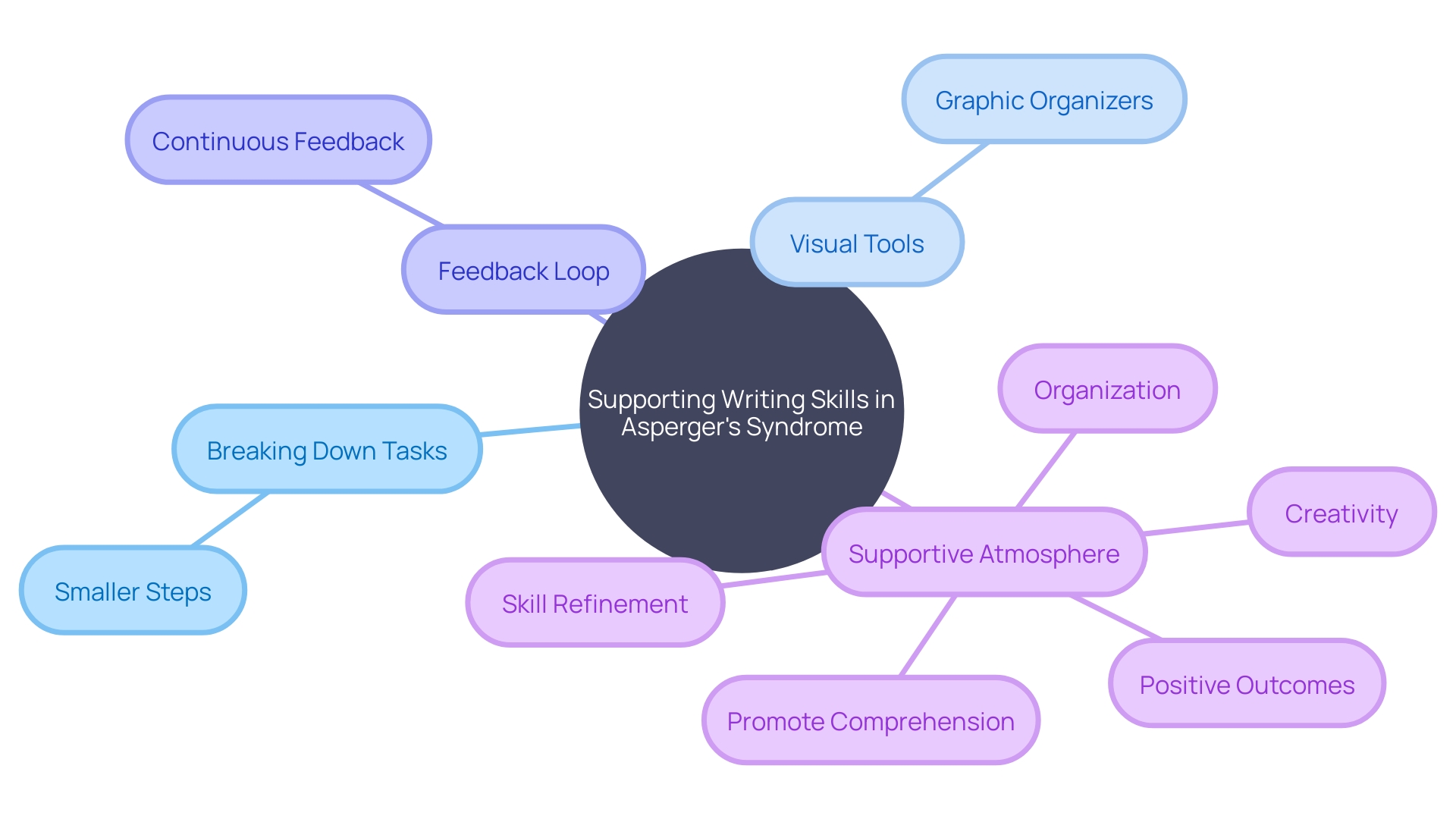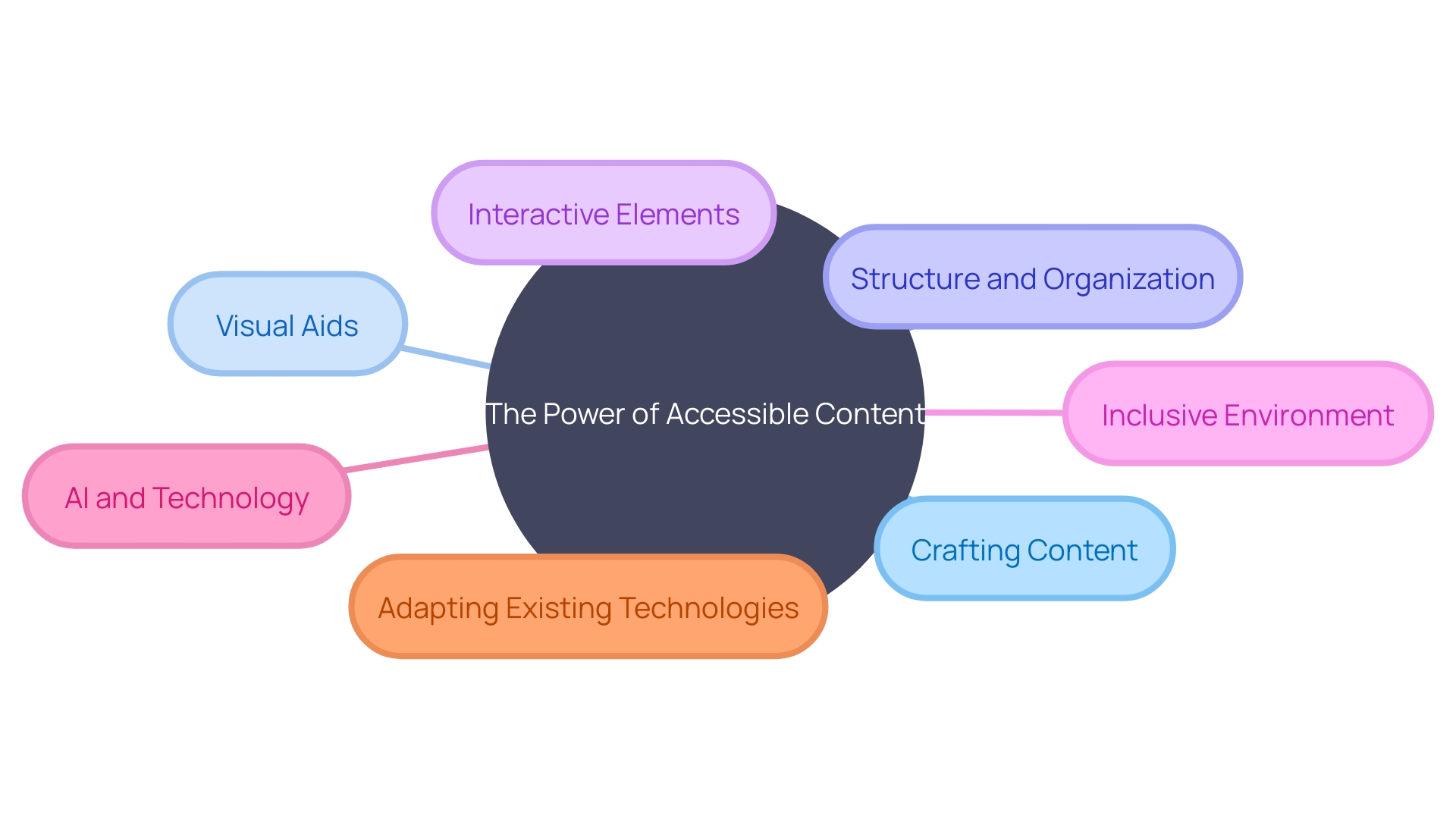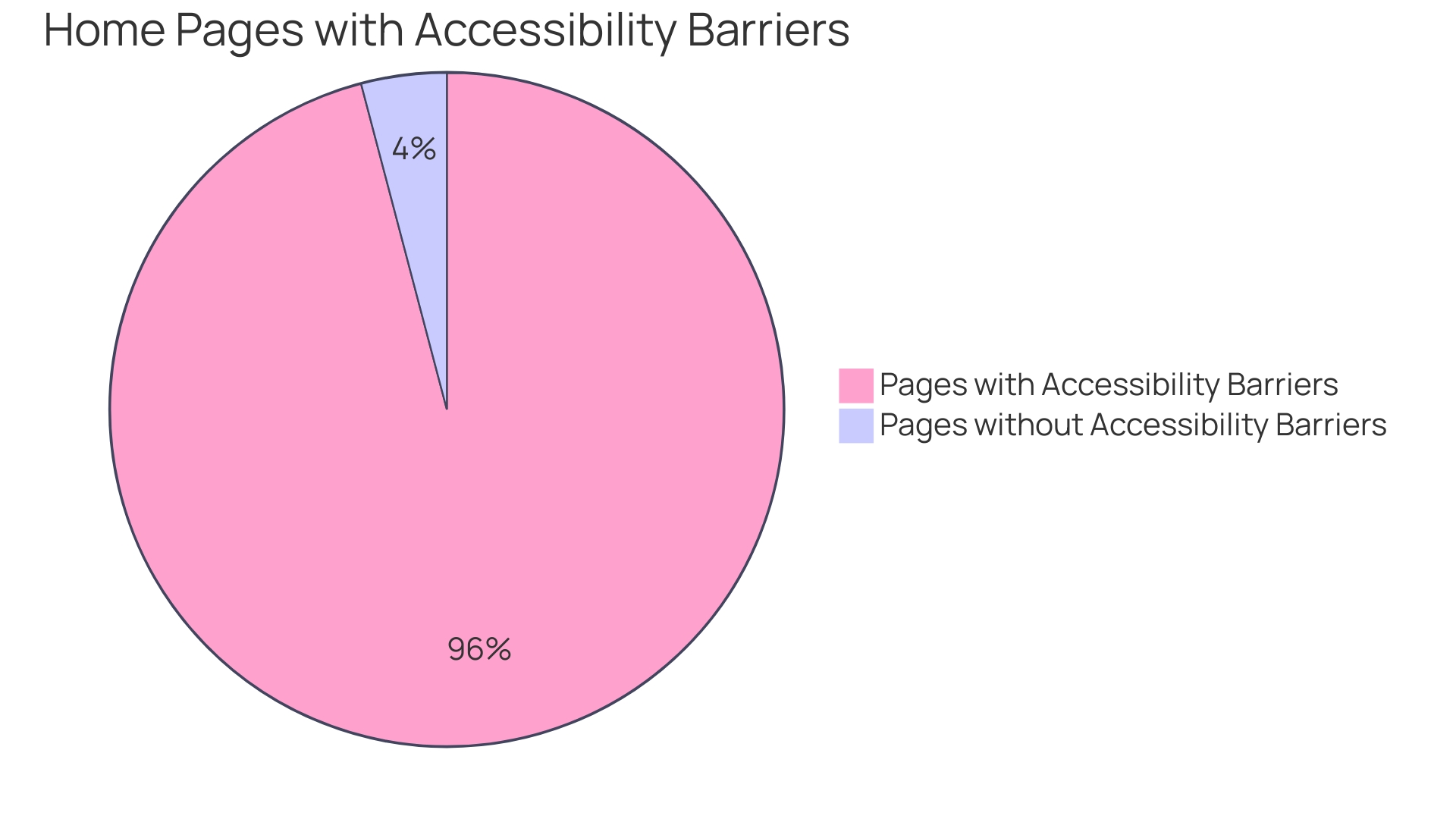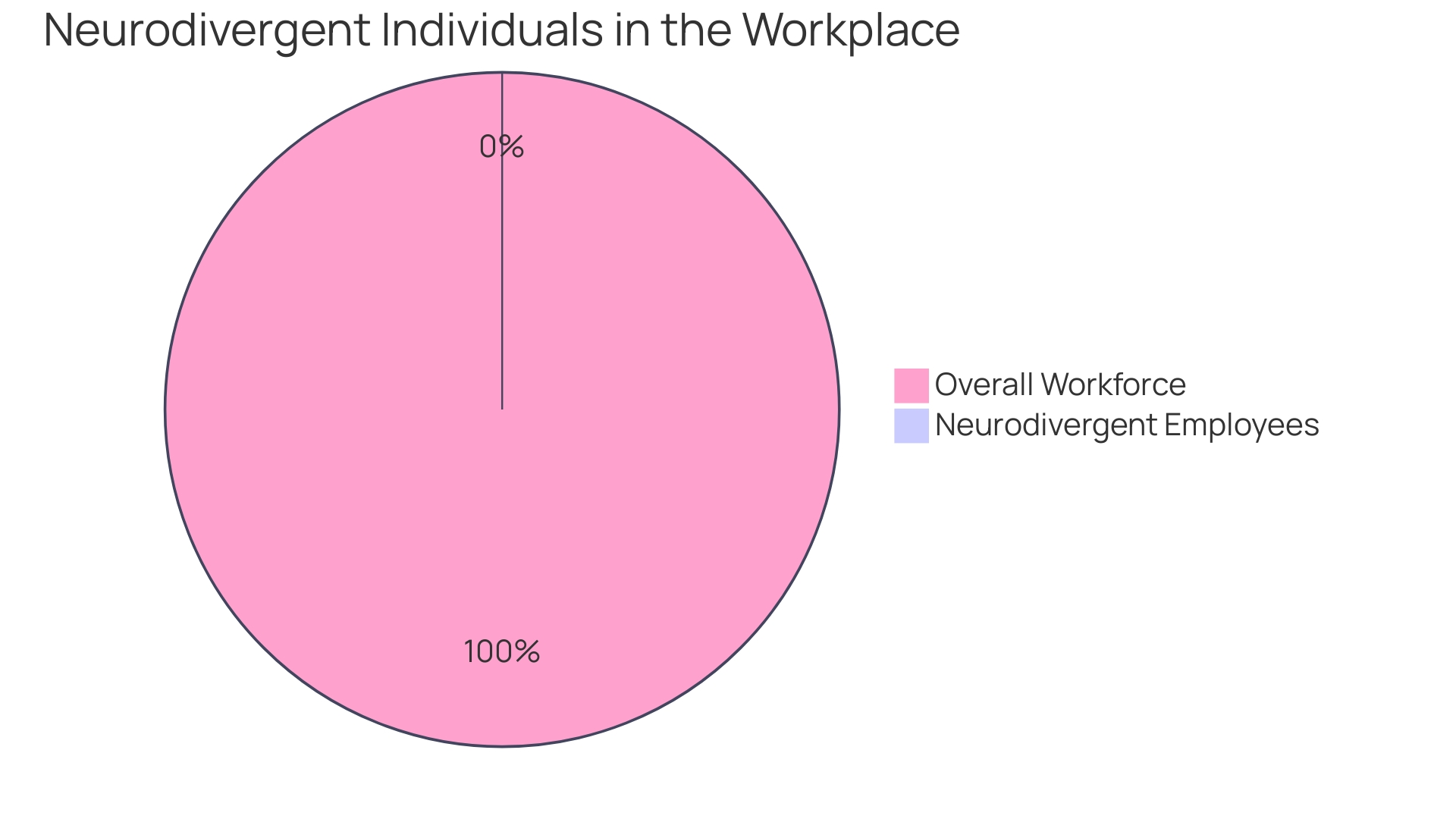Introduction
Asperger's Syndrome, a neurodevelopmental disorder on the autism spectrum, presents unique challenges for individuals, especially when it comes to writing. In this article, we will explore the writing difficulties faced by individuals with Asperger's and discuss key strategies for supporting them in developing their writing skills. We will delve into the importance of breaking down writing tasks, using visual tools, and creating a feedback loop.
Additionally, we will explore the significance of creating inclusive content for neurodivergent users and provide tips for content creators on designing for accessibility. Finally, we will highlight the importance of neurodiverse workforces in fostering inclusive environments and reaping the benefits of diverse talents. Join us in this empowering article as we navigate the world of Asperger's Syndrome and offer guidance to Parent Advocates seeking to support their children's well-being.
Understanding Asperger's Syndrome
Asperger's Syndrome, also known as Asperger's Disorder or simply Asperger's, is a neurodevelopmental disorder that is part of the autism spectrum. It was first described by Austrian pediatrician Hans Asperger in 1944, but it wasn't until 1994 that it was officially recognized as a separate diagnosis.
Asperger's Syndrome is characterized by difficulties in social interaction and communication, as well as restricted and repetitive patterns of behavior, interests, and activities. However, individuals with Asperger's often have average to above-average intelligence and do not have significant delays in language development or cognitive abilities.
Understanding the Writing Challenges of Individuals with Asperger's
Individuals with Asperger's Syndrome often face unique challenges when it comes to writing. These challenges can include difficulties with organization, planning, and executing the writing process.
They may struggle with generating ideas, organizing thoughts, and structuring their writing in a coherent manner. Additionally, individuals with Asperger's may have difficulty understanding and using figurative language, which can impact their ability to convey their ideas effectively. It is important to recognize and understand these challenges in order to provide appropriate support and accommodations.
Key Strategies for Supporting Individuals with Asperger's in Writing
Supporting individuals with Asperger's Syndrome in developing their writing skills requires thoughtfully tailored approaches. Breaking down writing tasks into smaller, achievable steps is crucial, as it provides a clear roadmap for completion. This method aligns with the Plain Numbers Approach, which emphasizes the importance of presenting information in a way that significantly enhances comprehension, as evidenced by recent trials conducted by the Bank of England and leading firms.
This approach underscores the effectiveness of simplifying complex tasks to improve understanding, a principle that can be applied to writing instruction for those with Asperger's. Using visual tools is another strategy that resonates with individuals on the spectrum. Visual aids such as graphic organizers not only clarify the structure of writing tasks but also make abstract concepts more tangible.
This visual scaffolding can be a game-changer in helping individuals with Asperger's to organize their thoughts and follow the writing process. Moreover, creating a feedback loop through practice, feedback, and revision sessions is vital. This iterative process allows for the refinement of writing skills, much like the adjustments made in the Plain Numbers Approach, which are based on insights from psychology and behavioral science.
However, it's equally important to foster a supportive atmosphere where individuals with Asperger's feel safe to express themselves. An environment free from judgment encourages creativity and risk-taking in writing, which can lead to significant growth and development in their writing abilities. The focus on an inclusive and empathetic setting is consistent with research indicating the need for interventions that avoid causing harm and promote positive outcomes for the autistic community.

Creating Inclusive Content for Neurodivergent Users
In the digital realm, where technology is a staple in everyday life, crafting content that resonates with neurodivergent individuals, particularly those with Asperger's Syndrome, is not just thoughtful—it's crucial. Embracing simplicity in language, steering clear of elaborate sentences and technical jargon, paves the way for clearer understanding.
Visual aids, whether images or diagrams, act as valuable allies in bolstering comprehension and engagement for these users. Structure and organization are the scaffolding of accessible content.
Headings and subheadings serve as signposts, while bullet points carve out information into digestible chunks. But accessibility doesn't stop at visuals and structure; it extends to how users interact with content.
Incorporating interactive elements and auditory options acknowledges the spectrum of engagement preferences, fostering an inclusive environment. This approach aligns with the principles of accessible digital content, which is designed to be fully perceivable and navigable, ensuring that all individuals, regardless of ability, can benefit from digital materials. By acknowledging the unique ways neurodivergent individuals process information, content creators can enhance user experience and promote inclusivity. As articulated by experts, the power of AI and technology can be harnessed to serve neurodiversity without necessitating special adjustments. The key lies in adapting existing technologies to be more user-friendly for individuals with ASD, thus embracing the full potential of our diverse society.

Designing for Accessibility: Tips for Content Creators
On Global Accessibility Awareness Day (GAAD), we spotlight the paramount need for digital content that accommodates the diverse experiences of all users, including the 1.3 billion individuals worldwide living with significant disabilities. For those with Asperger's Syndrome, a facet of Autism Spectrum Disorder (AS), the digital landscape can be particularly challenging.
The WebAIM Million report starkly reflects this issue, revealing that a staggering 95.9% of home pages exhibit accessibility barriers. Content creators are urged to embrace inclusive design principles that address the unique cognitive and sensory preferences of autistic users.
This means going beyond branding aesthetics to ensure high contrast between text and backgrounds, offering text alternatives for visual media, and ensuring compatibility with screen readers. Additionally, simplicity in navigation and customizable text features, such as adjustable font sizes and line spacing, are critical. By prioritizing these elements, we foster sensory-friendly digital spaces, enabling those with Asperger's to navigate the digital world with autonomy and dignity.

The Importance of Neurodiverse Workforces in Inclusive Environments
The concept of neurodiversity acknowledges that neurological variations, such as Asperger's Syndrome, are part of the natural diversity of the human brain. Recognizing this in the workplace can lead to a myriad of advantages, including enhanced creativity, innovation, and problem-solving skills.
As industries face a labor shortage and demographic changes, Human Resources professionals are turning their attention to a previously overlooked pool of talent: neurodivergent individuals. Sadly, over 80% of autistic adults are unemployed, yet many possess the abilities to significantly contribute to a company's success.
By creating inclusive environments that appreciate and support the distinctive strengths and viewpoints of those with Asperger's and other forms of neurodiversity, companies can cultivate a more varied and dynamic workforce. This commitment not only boosts productivity and employee morale but also aligns with the principles of diversity, equity, inclusion, and belonging (DEIB), which are essential for a psychologically safe and robust team. Recent trends show that numerous organizations are actively integrating neurodiversity into their DEIB strategies, recognizing the untapped potential that these individuals can bring to the workplace.

Conclusion
In conclusion, individuals with Asperger's Syndrome face unique challenges in writing, including organization, planning, and using figurative language. However, strategies such as breaking down tasks, using visual tools, and creating a feedback loop can support their development.
Crafting inclusive content for neurodivergent users involves simplicity in language, visual aids, and accessible structure. Content creators should embrace inclusive design principles that address cognitive and sensory preferences.
Recognizing the importance of neurodiverse workforces leads to enhanced creativity, innovation, and problem-solving skills. Integrating neurodiversity into diversity strategies fosters an inclusive environment. By implementing these strategies and embracing neurodiversity, we can create a more inclusive society that supports individuals with Asperger's Syndrome. Together, we empower Parent Advocates to navigate challenges effectively for their children's well-being.




